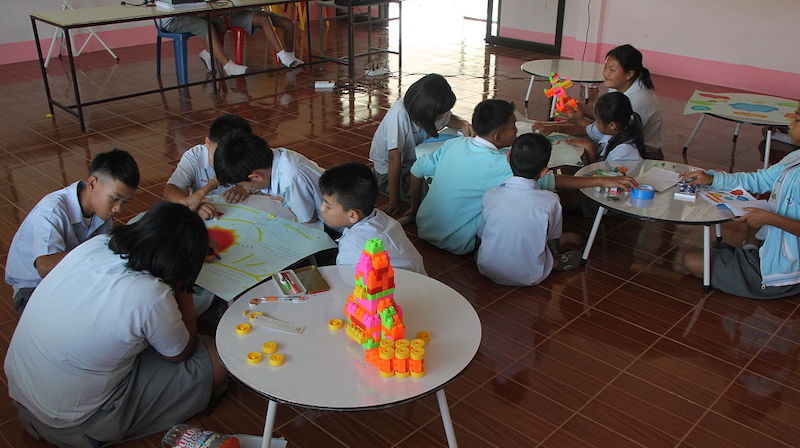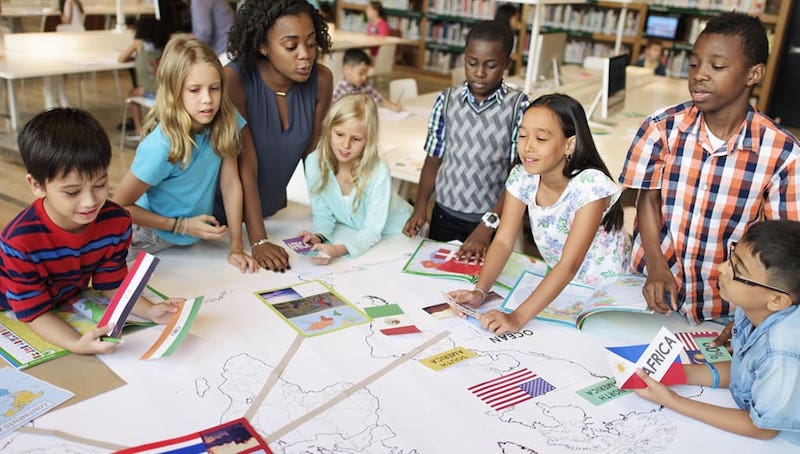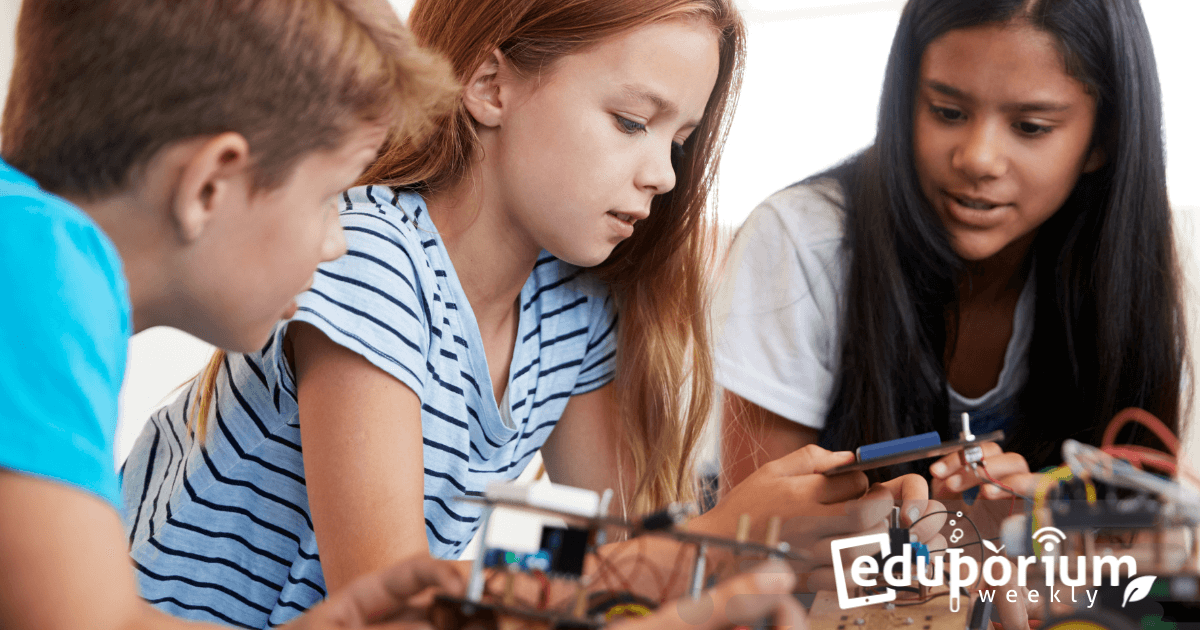For much of the last 15 months, students and teachers have sacrificed a lot of what they would have liked to do. Of course, we're all thankful for the heroic efforts of every educator, but there was only so much authentic learning students could take part in through virtual sessions. For most students, this means that STEM and project-based learning experiences were likely cast aside. PBL, in particular, is very beneficial for students for a number of reasons. Especially for high schoolers, it provides them with the chance to work in teams, generate authenticity, solve actual problems, and more. As we gear up for what looks to be a full return to normalcy this fall, it could also mean a return to more of this type of learning.
The Power of PBL in Education
It's true that students may have missed out on some opportunities throughout the remote learning period. As plans for the 2021-22 school year are developed this summer, PBL could be a top strategy for ensuring access to game-changing learning opportunities. The value of PBL in education is clear. Rather than requiring students to sit through lectures and take pages of notes, educators can use project-based learning to create authentic, hands-on opportunities for students. This often involves learning about problems they may not have even been aware existed and designing viable solutions for them. Upon returning to the classroom, it could even have a bit of added personal significance for many students.
Student-led learning and equity.
A lot of times, PBL gets its value through one particular transformation. Instead of these learning experiences being teacher-centered, educators pivot to empowering students to take control. The student-led learning and independence that result often leads to greater student agency, interest, and engagement. For some, this could be exactly what they need when they return to school, especially if it's for the first time since the onset of the pandemic. More than that, with the huge focus on equitable learning opportunities, especially on the heels of an era in which equity was anything but guaranteed, PBL can certainly be an option for school leaders.
Reaching the whole community with PBL.
PBL units can be incorporated into just about any subject. Students can take part in projects, design simulations, and work together to better their school community or actual community. A lot of the time, those students who participate in project-based learning go on to perform better academically outside of those projects. They also get the chance to recognize and develop some real-world skills, like relationship building, communication, and perseverance. Finally, PBL can also help educators reach and engage students from different backgrounds. Whether they're teaching ethnically or socioeconomically diverse sets of students, PBL has been known to create that authenticity for them and, ultimately, help boost outcomes.
Designing a Project-Based Learning Classroom
Students, of course, will be excited to return to the classroom this fall if they haven't already. They'll also probably be excited with new freedom to work and interact with their classmates after a year of distance. PBL is perfect for helping them re-establish relationships and social skills while working together. In project-based learning, they have more freedom to learn actively, set the tone for their projects, and build key skills. In designing a PBL-focused classroom space, teachers have a lot of potential options and strategies to use. And, this oftentimes starts with the physical space they provide as well as the classroom design.
Top things for teachers to consider.
Since so much of PBL is centered on collaboration, the classroom setup should ideally reflect that. Teachers are always thinking about their classroom design, but it's especially important when facilitating effective PBL. If using desks, they should be set up so students can face each other in small groups. If you don't need them, however, they can be replaced with other seating solutions, like mats or rugs. But, if students will need to be writing, they may need access to a surface for that. If not, they may also need a flat and large enough surface for building. Students also might need computers and other tangible materials a lot of the time. Having an area for storing and using these tools could be helpful or groups could rotate where they're working depending on when they need certain tools.
The teacher as a resource in PBL.
In PBL, technology is great, but it needs to be used with a purpose. Depending on their ages, there's a good chance students will use computers for much of their project-based work. This is how they'll conduct research, organize information, and even create presentations. To that end, teachers should ensure each group has a laptop (or any other connected device) and that they're able to access a strong Internet connection. Finally, teachers can consider how to set things up so that they are accessible to all students. Teachers, themselves, are the ultimate resource in PBL. When students have questions or want to share their ideas, their teacher can play a great role. And, there are always online resources you can explore for more guidance on creating a PBL classroom.

Is PBL Poised to Gain Momentum?
We saw the struggles educators faced in trying to adapt traditional instructional models for remote students. We also saw how some students faded in terms of skills development due to a lack of innovative learning opportunities. That's not to say that teachers should feel compelled to include extra innovation when students return to school buildings. If they were looking for a way to do that, however, PBL could offer some valuable experiences. In theory, using PBL in remote learning could have been helpful since it's possible to adapt and structure it in different ways. Plus, students could have focused a lot on developing agency and resilience in the face of dealing with constant changes.
PBL in today's classrooms.
In order to facilitate meaningful, personal, and inquiry-driven experiences in the classroom, PBL seems like a solid solution. It typically involves students working in groups to investigate or solve authentic problems. Projects are also typically long-term endeavors that students work on throughout the duration of a unit as opposed to a summative effort taken on upon the completion of a unit. PBL has helped educators and school leaders design and define the 'modern classroom' in some cases. Since today's teachers are really invested in promoting active learning, PBL, of course, makes sense. The self-paced nature, opportunities for blending instruction, and desire for collaboration also make implementing project-based learning worthwhile for teachers.
Mastery in project-based learning.
PBL also helps students build greater mastery of classroom content. Mastery-based learning has proven to be an effective approach for many students—one in which they don't move on to the next topic until they've demonstrated mastery of the last. If this same concept is applied in PBL, students can master knowledge in key content areas, seeing how it relates to their projects. Plus, educators can easily incorporate quick formative assessments to ascertain student knowledge levels. With the opportunity to show what they know throughout the course of their projects, students typically gain more confidence, which can spread into presentations, future projects, and other areas as they return to the classroom.
Advantages of Project-Based Learning
As we know, project-based learning requires students to be more active in their learning and to collaborate with classmates. Shifting their entire focus to their projects can also help students deepen key pieces of knowledge. Beyond that, there are specific advantages that arise when students learn in this way. At the top of that list is exposure to real-life problems. PBL is, first and foremost, typically intended to offer authentic experiences to students. When they're pursuing an answer to a real-world question or attempting to solve a real-world problem, everything about their experience becomes more authentic. They can find and consult with experts, monitor news stories, discuss among their group, or even lead their own research in the process.
Steps to making PBL successful.
Once they have a problem defined, students can really start getting hands-on. Together, they can start planning everything beginning with drawing out the problem. This helps them visualize its effects and helps them identify potential solutions. Next, they can jot down questions they want to find answers to and set priorities for what to focus on. During this phase of the project, before actually starting any tangible work, they can really help break things down and keep themselves organized. With everything mapped out, students can then create a prototype. This is a great opportunity for them to implement design thinking as well as they draft up a plan.
More benefits of project-based learning.
With typical classroom lectures all but removed from most PBL experiences, students can really get a sense of what real-world learning is like. The hands-on and collaborative nature of this type of work really opens up opportunities for creativity as well. Teachers can also recommend that students attempt to think about their projects on a global scale. This is very much an authentic part of real-world learning and can help students consider community implications, what's topical in different parts of the world, and how they might be able to help. Finally, in setting goals and scaffolding learning opportunities, students can enjoy the benefits of PBL and truly maximize their skills development in the process.

Implementing PBL in a Modern Learning Environment
In the last year, we've seen hands-on experiences fade because of the need for remote learning. As teachers and students prepare to return to the classroom this fall, various aspects of in-person instruction are poised to have changed. In order for educators to be successful at implementing effective PBL initiatives, they're going to need a strategic approach. We've already touched on some of the strategies, which include self-paced learning and ensuring student mastery. With communities still facing so many issues resulting from the pandemic, however, it's a perfect opportunity for students to find solutions.
How to create the right environment.
Though the modern classroom is likely to have changed upon kids returning, these features may still accommodate PBL. For example, blended learning may be on the table and there's nothing wrong with that in PBL. Students may also be given more freedom to move at their own pace, which helps boost PBL programs, too. Plus, more than ever, educators may implement a commitment to mastery-based learning. All these (and more) can contribute to the creation of active learning environments that are authentic and able to be broken down into manageable chunks. Breaking things down, in fact, can really help students manage projects and assume control of learning outcomes.
The PBL process in the classroom.
Rolling out PBL with students new to this approach takes some planning. Initially, teachers may need to generate student interest and excitement by posing a key question and challenging them to start identifying potential answers. From there, they'll need to do some research and start formulating their own predictions and goals for the project. Especially when chunking projects to help with organization, the next step is for students to develop and refine their plans and theories. This gives educators the opportunity to offer critiques and suggestions to their approach. Finally, after conducting all of their research, evaluating outcomes, and preparing a presentation, students are able to share what they've learned. And, that's one of the best ways in which they can experience authenticity in their education.
For the latest EdTech, STEM, and 21st century education news, follow us on Twitter and Instagram. Like us on Facebook, too, or sign up for our newsletter for our latest product announcements and offerings. If you have an idea for an Eduporium Weekly theme, send us a message on social media or comment below.



